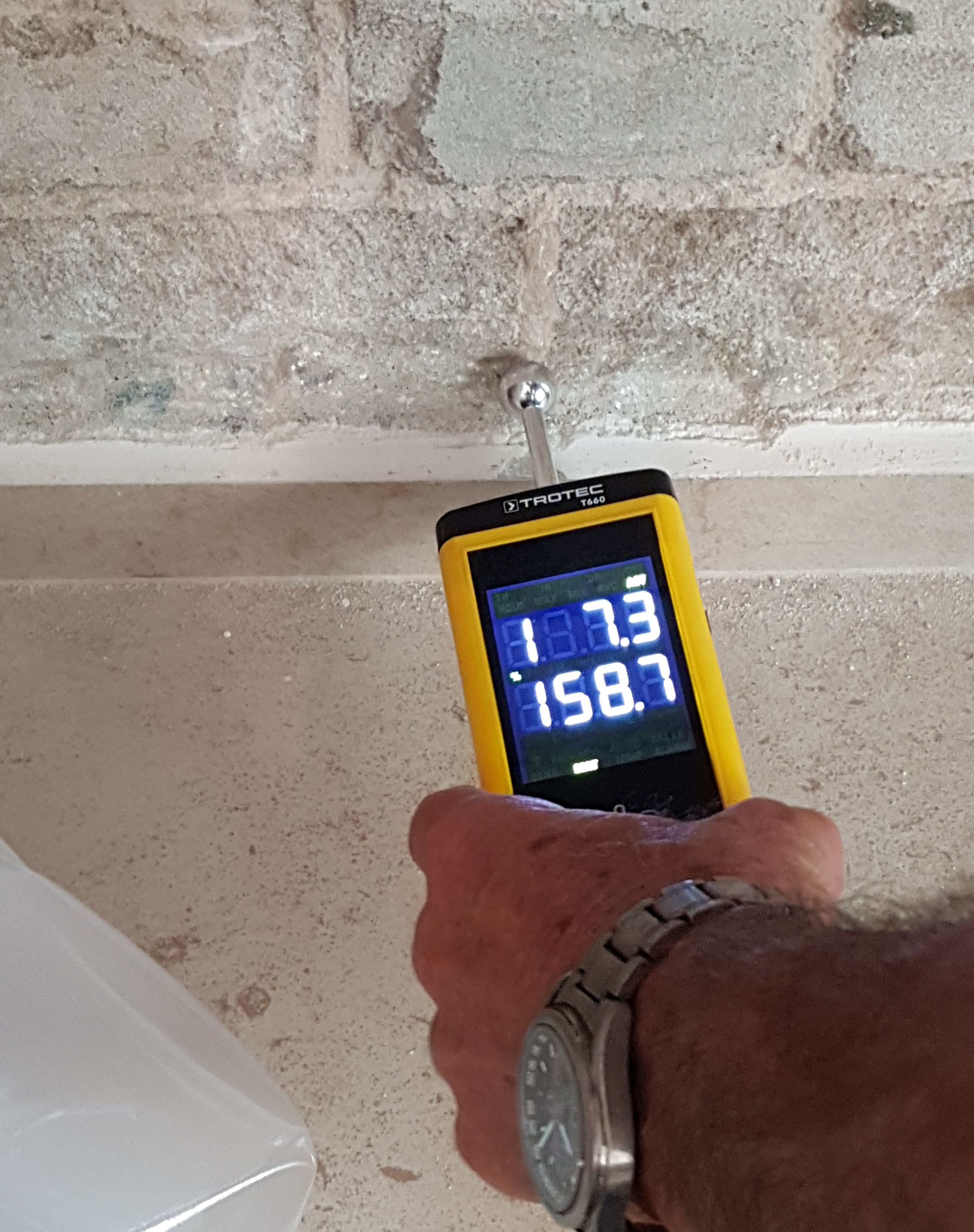Why Every Homeowner Requirements a Moisture Meter: Key Benefits and Functions
Wiki Article
The Ultimate Guide to Wetness Meters: A Comprehensive Overview and How They Can Conserve You Cash
In the world of building maintenance, building, and different markets, the value of precisely measuring dampness levels can not be overemphasized. Wetness meters act as crucial tools in detecting and checking moisture content in products, assisting in avoiding pricey problems and ensuring the high quality of items. Recognizing the nuances of various kinds of wetness meters, their applications, and the potential cost-saving advantages they provide can be a game-changer for companies and experts alike. Uncovering how these gadgets can not only improve processes but likewise contribute to financial cost savings is a trip worth embarking on.Sorts Of Moisture Meters
Various sorts of dampness meters are readily available for various applications in various industries. One typical kind is the pin-type dampness meter, which determines the electric resistance between 2 pins put right into a material. This kind is ideal for timber, drywall, and various other structure products. Pinless wetness meters, on the other hand, usage electro-magnetic sensing unit plates to check a bigger area without creating damages to the product's surface area. Moisture Meter. These meters are ideal for swiftly assessing moisture levels in big locations such as floorings and wall surfaces.
Infrared wetness meters measure the thermal buildings of a material to identify its moisture web content non-invasively, making them helpful for applications where pin or pinless meters might not be ideal. Comprehending the various kinds of moisture meters available can aid markets select the most suitable tool for their particular wetness dimension requirements.

Advantages of Utilizing Dampness Meters
Moisture meters supply indispensable benefits in precisely monitoring and assessing moisture degrees in diverse materials and environments. One of the main advantages of using wetness meters is the prevention of prospective damages caused by excess wetness.
Furthermore, using wetness meters can cause enhanced energy effectiveness. By identifying locations with high dampness degrees, such as leakages or inadequate insulation, modifications can be made to enhance energy preservation and minimize utility expenses. In farming settings, wetness meters play a crucial role in enhancing crop yields by making it possible for farmers to monitor soil dampness levels and make informed irrigation decisions. Overall, the benefits of using dampness meters cover throughout numerous sectors, providing economical options and advertising better quality assurance techniques.
Exactly How to Choose the Right Wetness Meter
Selecting the ideal wetness meter entails thinking about crucial variables such as product compatibility, measurement range, and calibration accuracy. When picking a wetness meter, it's important to ensure that the meter is ideal for the particular product you will be screening. Different materials have differing electrical properties that can impact moisture readings, so picking a meter designed for your product is vital for accurate results. In addition, take into consideration the dimension array of the dampness meter. Ensure that the meter can identify dampness levels within the range required for your applications. Calibration accuracy is one more vital factor to maintain in mind. Decide for a wetness meter with trusted calibration to ensure constant and accurate analyses. Some meters may call for regular calibration adjustments, so comprehending the calibration process is essential. By carefully assessing these factors, you can pick a dampness meter that fulfills your requirements and gives accurate dampness dimensions for your projects.Correct Methods for Wetness Meter Usage

Price Financial Savings With Dampness Meter Applications
Exactly how can the strategic usage of dampness meters lead to substantial price financial savings throughout different industries? In the farming market, wetness meters aid in identifying the optimum time for collecting plants, stopping excess or over-drying dampness that can influence the final item's top quality.
Likewise, in building, moisture meters aid protect against pricey damages by spotting wetness levels in building products, such as timber or concrete, which can lead to architectural concerns otherwise addressed without delay. By recognizing trouble locations beforehand, specialists can take corrective steps to stay clear of extensive repair services or replacements, ultimately conserving time and cash.
Moreover, in the food handling industry, wetness meters are necessary for checking product top quality and guaranteeing compliance with safety laws. By accurately determining moisture material in food items, producers can stop spoilage, keep quality, and reduce waste, causing considerable cost savings. Generally, the critical application of moisture meters is a useful financial investment that can result in significant cost decreases and enhanced effectiveness throughout various markets.
Final Thought
In conclusion, moisture meters are useful devices for discovering and gauging moisture levels in different materials. By making use of the appropriate moisture meter and complying with proper techniques, users can properly stop expensive problems caused by excess wetness.Dampness meters offer as find more information vital tools in discovering and monitoring moisture web content in materials, aiding in avoiding costly damages and making certain the top quality of items. Infrared dampness meters measure the thermal residential properties of a product to determine its dampness material non-invasively, making them valuable for applications where pin or pinless meters might not be ideal.Wetness meters provide very useful benefits in precisely assessing and checking dampness degrees in varied materials and settings. In agricultural settings, moisture meters play a critical duty in enhancing crop returns by making it possible for farmers to keep an eye on dirt dampness degrees and make notified irrigation decisions.In final thought, wetness meters are beneficial devices for detecting and measuring wetness levels in numerous products.
Report this wiki page